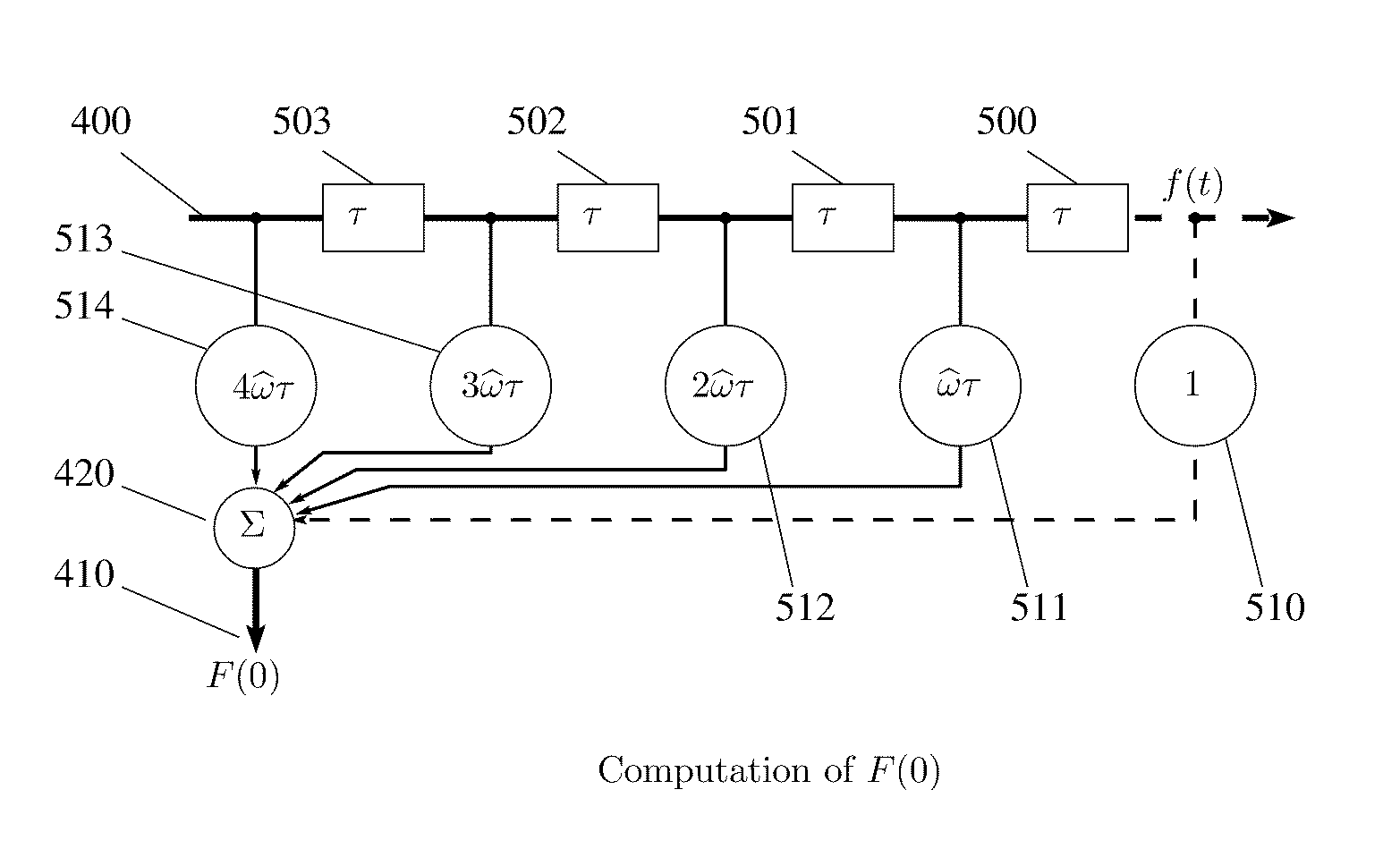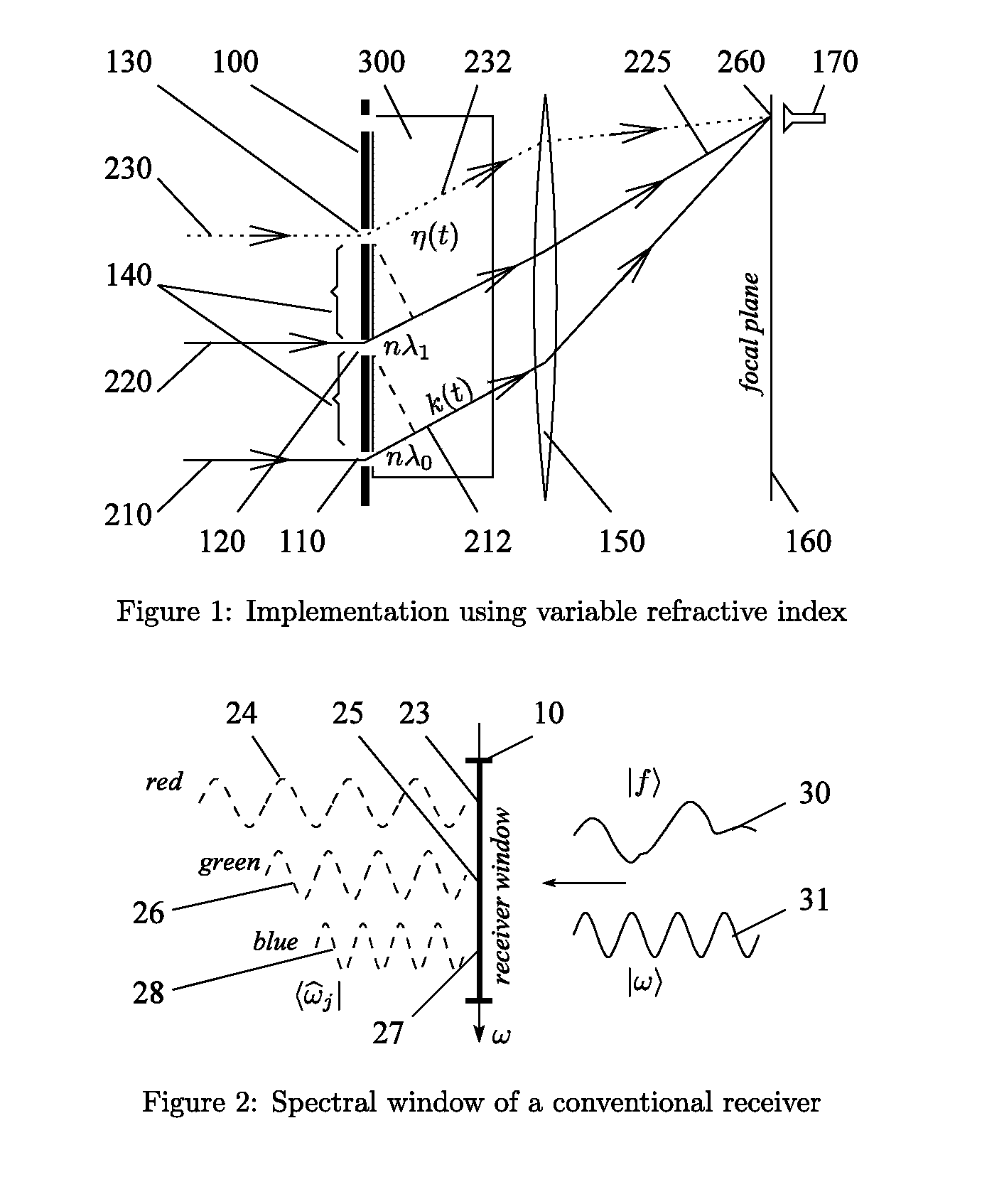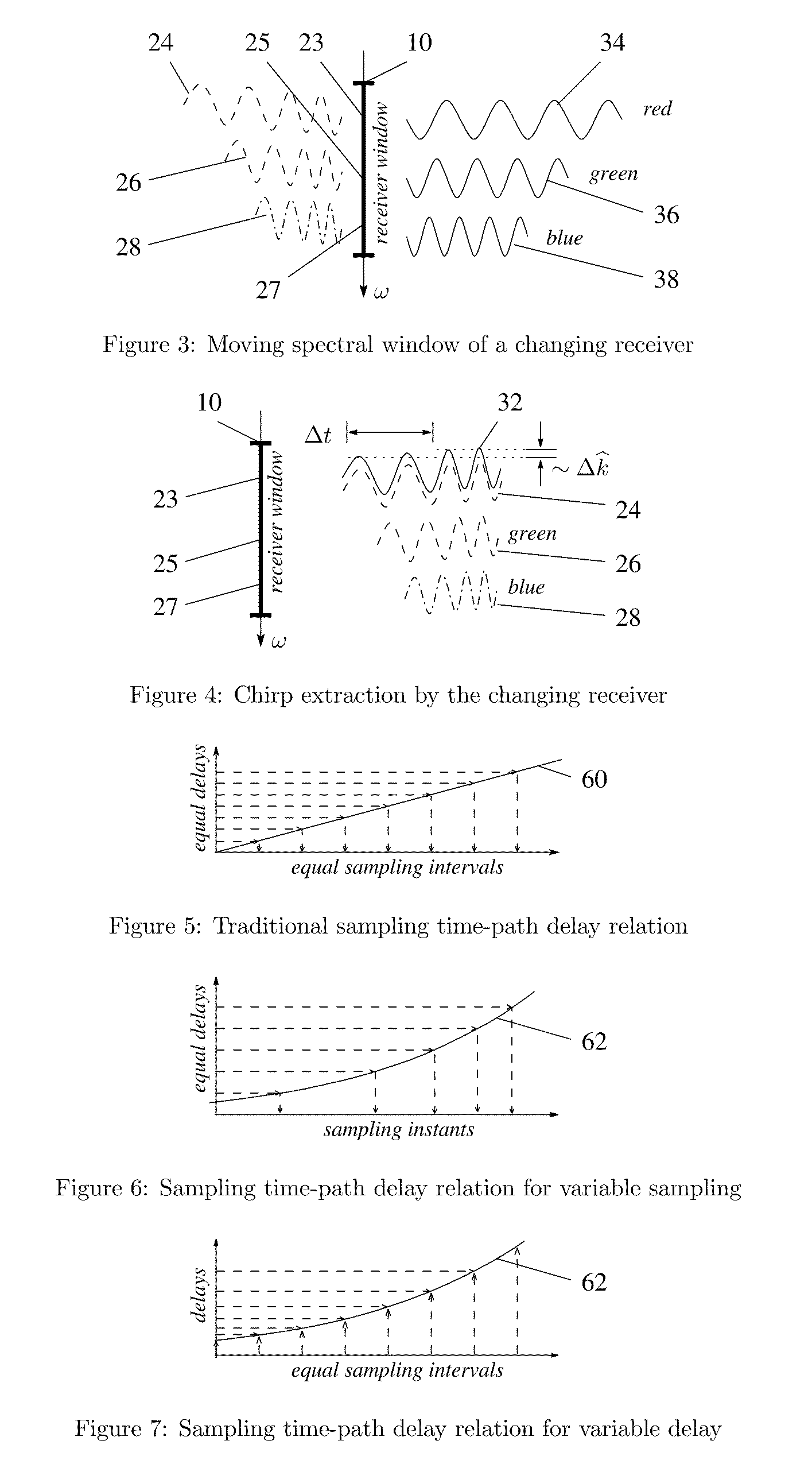Distance-dependent spectra with uniform sampling spectrometry
a technology of distance-dependent spectra and uniform sampling spectrometry, which is applied in direction finders using radio waves, pulse characteristics measurements, instruments, etc., can solve the problems of inability to improve the spread-spectrum coding bound, limited single link or cellular scenario, and inability to enable general use of physical space. to achieve the effect of enhancing the observability of scaled spectra
- Summary
- Abstract
- Description
- Claims
- Application Information
AI Technical Summary
Benefits of technology
Problems solved by technology
Method used
Image
Examples
Embodiment Construction
[0080]Accordingly, the principle of the present invention is to transfer the temporal variation, required in the spectral analysis or selection process of a receiver for obtaining distance-dependent scaling of received frequencies, from the individual grating or sampling intervals at the receiver front end or at the front end of the spectral analysis or selection process, where they would be difficult to incorporate, to a subsequent set of path delays generally having a bulk character and being also easier to vary in a controlled manner.
[0081]The preferred embodiment of the present invention accordingly comprises physical or computational means for effecting these path delays and for varying them both temporally, as required by the inventive principle, and spatially, as required for specific cases like correlation spectroscopy. The variable refractive index form of the preferred embodiment for optical implementations will be described first, to illustrate the principle.
[0082]The phy...
PUM
 Login to View More
Login to View More Abstract
Description
Claims
Application Information
 Login to View More
Login to View More - R&D
- Intellectual Property
- Life Sciences
- Materials
- Tech Scout
- Unparalleled Data Quality
- Higher Quality Content
- 60% Fewer Hallucinations
Browse by: Latest US Patents, China's latest patents, Technical Efficacy Thesaurus, Application Domain, Technology Topic, Popular Technical Reports.
© 2025 PatSnap. All rights reserved.Legal|Privacy policy|Modern Slavery Act Transparency Statement|Sitemap|About US| Contact US: help@patsnap.com



